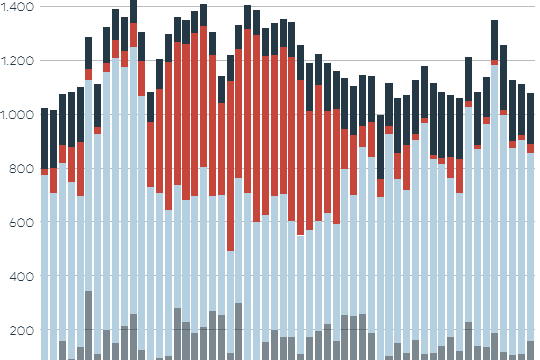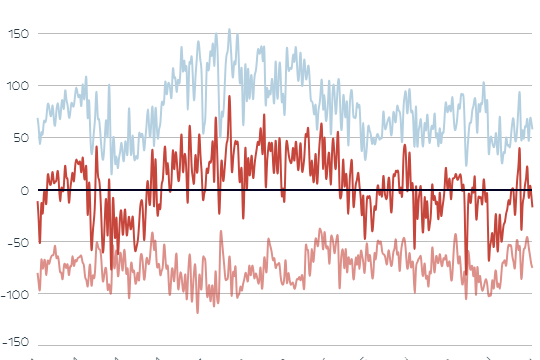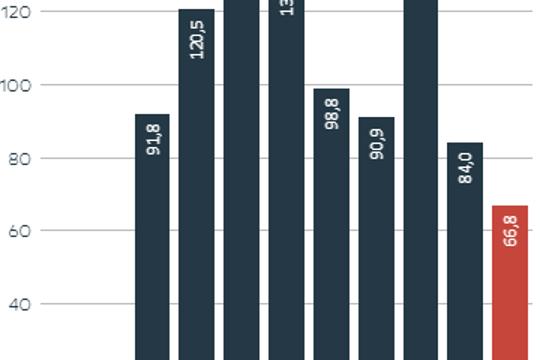The weather conditions in August (calendar weeks 32-35) led to a 38.7% increase in wind energy production compared to August 2024, and a 16.6% increase in hydropower. In general, total renewable generation (4,486 GWh) increased by 15.4% year-on-year (3,888 GWh production in August 2024).
“We can be very pleased with our renewable electricity production in August, particularly the strong performance from wind power. As a result, the country was a net exporter of electricity for the third consecutive month. However, the full potential of renewable generation could not be realized due to the limitations of the trans-regional electricity grids. The simultaneous feed-in of large volumes of photovoltaic (PV) power required the controlled release of water over the weir to maintain system balance. If we fail to accelerate the expansion of our infrastructure, we will face a self-defeating cycle,” explains Gerhard Christiner, CTO of Austrian Power Grid (APG). “By promoting PV electricity without sufficient grid capacity, we risk producing energy that holds no value when market prices drop to zero.”
This shows that an uncoordinated and asymmetrical expansion of photovoltaic and wind power generation is creating systemic inefficiencies that impose significant costs on the economy.
In August, redispatch measures and actions to alleviate grid congestion resulted in a “loss” of 10,910 MWh due to the reduction of renewable electricity generation. This figure exceeds the total losses recorded during the first seven months of 2025 (January to July), when 9,375 MWh of run-of-river generation had to be curtailed to maintain grid stability.
Strong renewable generation makes Austria a net electricity exporter in August
In August, Austria’s renewable electricity production remained robust. Photovoltaic (PV) generation accounted for 750 GWh, representing a 2.0% decrease compared to the previous period. In contrast, both hydropower and wind energy recorded increases: hydropower rose by 0.7% to 3,145 GWh, while wind generation grew by 1.8% to 489 GWh. Overall, renewable energy sources contributed approximately 94.0% of total electricity feed-in during the month, highlighting Austria’s continued progress toward a sustainable energy system.
Strong renewable generation led to a net export of 426 GWh of electricity (based on schedules) from Austria (APG control area*) during August 2025, with exports recorded on 23 days throughout the month. This marks a clear contrast to August 2024, when Austria was a net importer with a balance of 30 GWh, and exports on only 12 days.
Emergency interventions required on 125 Days
By the end of August 2025, system interventions were necessary on 125 days, compared to 123 days over the same period in 2024. These redispatch measures incurred costs totaling €66.8 million, an increase of €5.2 million compared to August of the previous year.
“The scale of the targeted interventions in the power plant fleet during August clearly exposes the shortcomings in grid infrastructure and the lack of transmission capacity,” said Gerhard Christiner, CEO of Austrian Power Grid (APG). “This highlights the urgent need to accelerate grid expansion, enhance digitalization across all stakeholders, and drive the cost-efficient transformation toward a resilient, affordable, and intelligent energy system. Swift adoption of two key legislative frameworks — the Renewable Energy Expansion Acceleration Act (EABG) and Electricity Industry Act (ElWG) — is crucial. Without these, the industry will lack essential regulatory foundations and the momentum needed to expedite approvals for vital projects in generation, storage, and grid infrastructure.”
Energy exchange within Austria
A high-capacity transmission grid is the prerequisite for ensuring that electricity surpluses in the individual federal states can be distributed throughout Austria and deficits can be compensated for.
In August 2025, the energy exchange within Austria can be summarized as follows: The highest volumes of energy were fed into the APG grid in Lower Austria (361 GWh) and Tyrol (297 GWh) and thus made available throughout Austria, while Vienna (480 GWh) and Carinthia (179 GWh) drew the most electricity from the APG grid.
Increasing electrification
The moderate upward trend in electricity consumption continued in August. According to the latest available data, 4,161 GWh of electricity was drawn from Austria’s public grid during calendar weeks 32 to 35**, representing an increase of approximately 1.4% compared to the same period last year (4,102 GWh). This growth reflects the ongoing electrification across all sectors of society and the economy.
* The APG control area covers all of Austria with the exception of one corridor each in Vorarlberg and Tyrol.
** This is the electricity consumption from the public grid (including grid losses, excluding pumped storage) in the APG control area. The figures do not include electricity produced and consumed by private PV units.
About Austrian Power Grid (APG)
As independent transmission system operator Austrian Power Grid (APG) is in charge of ensuring the security of the electricity supply in Austria. With our high-performance and digital electricity infrastructure and the use of state-of-the-art technologies we integrate renewable energies and reduce the dependency on electricity imports, we are the platform for the electricity market, and we provide access to reasonably priced electricity and thus create the basis for Austria as supply-secure and future-oriented industrial and business location and place to live. The APG grid totals a length of about 3,500 km and is operated, maintained, and continuously adapted to the increasing challenges of the electrification of businesses, industry, and society by a team of approximately 1,000 specialists. 67 substations are distributed all over Austria and the majority is operated remotely. Thanks to our committed employees Austria had a security of supply of 99.99 percent also in 2024 and thus ranks among the top countries worldwide. Our investments of 630 million euros in 2025 (2024: 440 million euros, 2023: 490 million euros) are a motor for the Austrian economy and a crucial factor in reaching Austria’s climate and energy targets. Until 2034 APG will invest a total of approximately 9 billion euros in grid expansion and renovation projects.
Press contact
Christoph Schuh




_360x600.png)